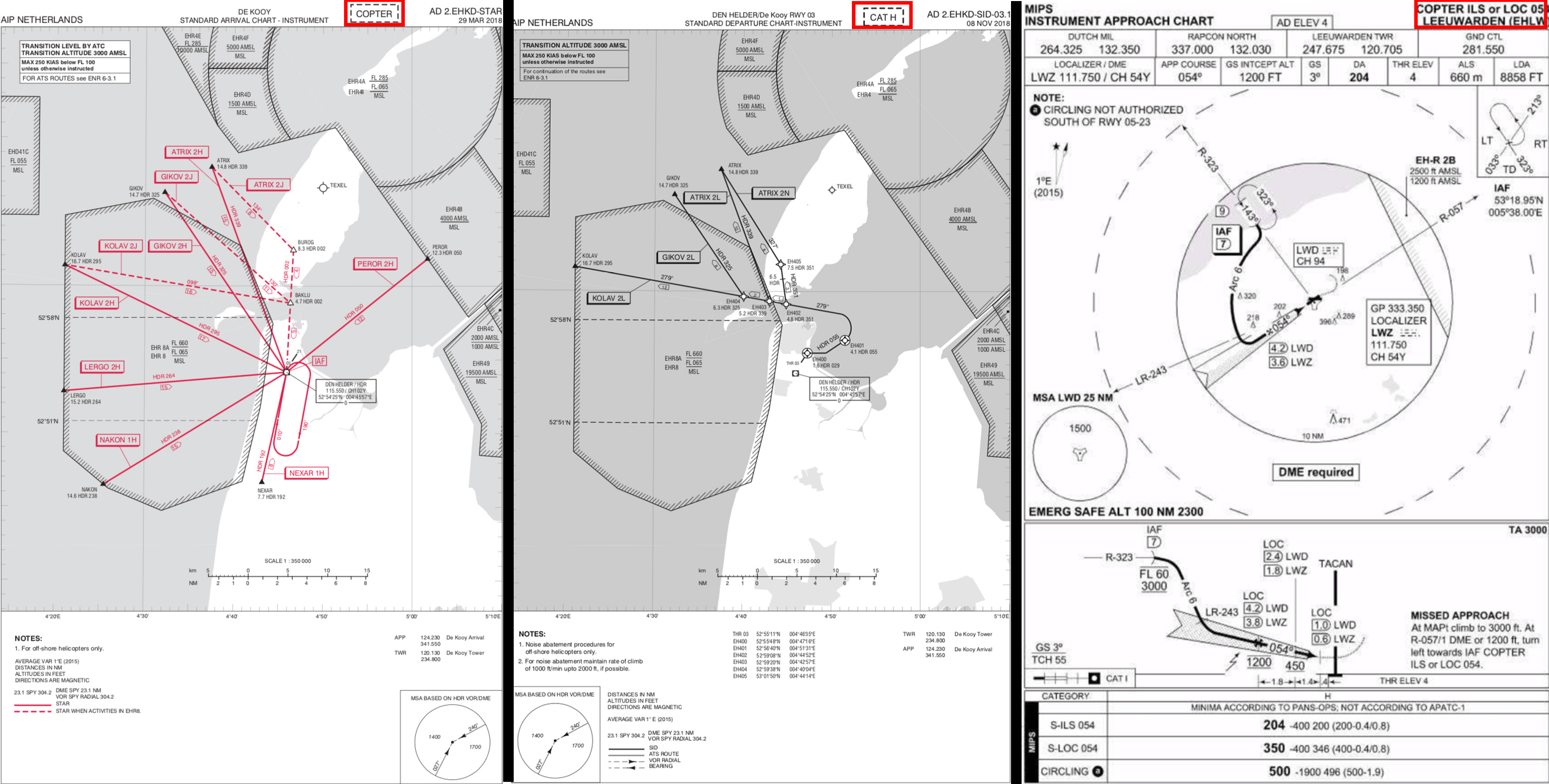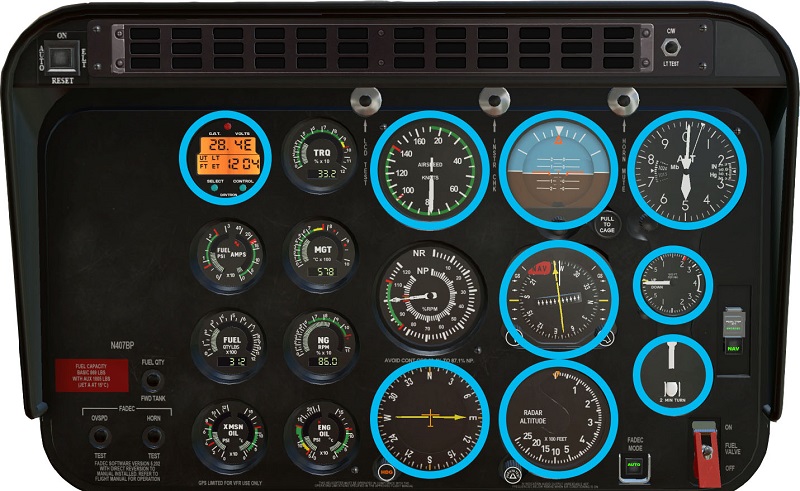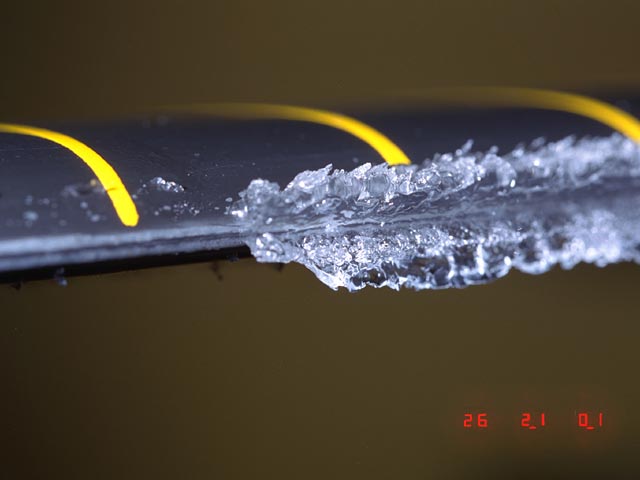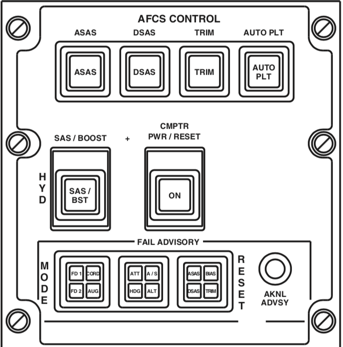¶ Introduction
From the moment the first helicopter introduced to the world, they are mainly designed for visual flight operations like search and rescue or emergency medical services thanks to their unique vertical take-off and landing capability. This enables them to reach the most isolated places of earth and save someones life in the most difficult times.
But what about their own protection? VFR flying with a helicopter on a sunny day is the most cheerful times of pilots, but what about the bad weather? Are they capable of flying under instrument conditions when things are not going as planned?

The answer is yes! Like fixed wing aircraft, helicopters are capable of flying under instrument conditions if certain requirements are met. The basic IFR instruments are sufficient in theory but when it is a helicopter, pilots need much more sophisticated avionics on board o accomplish a successful instrument flight.
As vertical take-off and landing capability is an incredible advantage, it is also a disadvantage on design considerations. Much more engineering is required and also they are way too expensive compared toae roplanes.
But we are lucky with the chance to fly these state-of-the art helicopters at our home simulators and enjoy the online flying experience at IVAO.
¶ Differences
Except some minor differences, instrument flying is very similar for both fixed and rotary wing aircraft. Rules followed by rotary and fixed wing pilots after take-off until final approach are almost the same.
In IFR conditions, helicopters have to keep their forward velocity to sustain a stable instrument flight. A speed called "Vmini" which is the minimum IFR flight speed has been developed for this reason.
There is also another speed limitation for helicopters flying under IFR conditions called "Vnei" which is the maximum speed under IFR conditions and differs from "Vne" with the "I" at the end which stands for Instrument.
The major differences come up with the operational concerns. For example, special take-off and landing minimums dedicated for helicopters allow them to take-off and land in lower visibility conditions.
There are also "Copter Only" departure and approach charts. These charts allow them to approach specially designed helipads/airports due to the benefit of their extended manoeuvrability.

¶ Requirements
Helicopters are subjected to some requirements to fly under IFR conditions. These requirements can be broken down into 6 categories:
- Flight and navigation equipment
- Miscellaneous requirements
- Stability
- Helicopter flight manual limitations
- Operations specifications
- Minimum equipment list (MEL)
¶ Flight and navigation equipment
There are certain equipment requirements for helicopter IFR flight. The composition of this equipment creates the navigation capability.
All helicopters when operating in accordance with IFR shall be equipped with;
- A magnetic compass;
- An accurate timepiece indicating the time in hours, minutes and seconds;
- Two sensitive pressure altimeters;
- An airspeed indicating system with means of preventing malfunctioning due to either condensation or icing;
- A slip indicator;
- An attitude indicator (artificial horizon) for each required pilot and one additional attitude indicator;
- A heading indicator (directional gyroscope);
- A means of indicating whether the power supply to the gyroscope instrument is adequate;
- A means of indicating the outside air temperature on the flight deck;
- A rate of climb and descent indicator;
- A stabilization system, unless it has been demonstrated to the satisfaction of the certificating authority that the helicopter possesses, by nature of its design, adequate stability without such a system;
- Such additional instruments or equipment as may be prescribed by the appropriate authority

¶ Miscellaneous requirements
These requirements include supporting systems for helicopter IFR flight like ice protection. Since helicopters are very sensitive to icing, having adequate ice protection and sufficient power to support these systems is necessary to fly under IFR.

For transport category helicopters, an alternate static port and thunderstorm lights are also a requirement.
¶ Stability
Helicopters are designed to deal with combinations of different aerodynamic forces. Two different rotating lift surfaces controlled by hydraulic systems are negatively affected by turbulence which usually exists in IFR conditions.
Different levels of stability augmentation systems for helicopters are designed to support pilots and reduce workload. Due to expected turbulence and heavy work load under IFR conditions, some level of stability augmentation is necessary.
The typical stability systems developed and required under IFR conditions are;
- Aerodynamic surfaces
- Trim systems
- Stability Augmentation Systems (SAS)
- Attitude Retention Systems (ATT )
- Autopilot Systems (APs)
- Flight Directors (FDs)
The AFCS Control panel of the Sikorsky S-70 Blackhawk Helicopter is shown below as an example.

¶ Helicopter flight manual limitations
Helicopter Flight Manuals define systems and functions that are required to be in operation or engaged for IFR flight.
The typical manual limitations under IFR conditions are:
- Minimum equipment required for IFR flight
- Vmini (minimum speed---IFR)
- Vnei (never exceed speed---IFR)
- Maximum approach angle
- Weight and center of gravity (CG) limits
- Helicopter configuration limitations (such as door positions and external loads)
- Helicopter system limitations (generators, inverters, etc.)
- System testing requirements (many avionics and AFCS, AP, and FD systems incorporate a self-test feature)
- Pilot action requirements (for example, the pilot must have hands and feet on the controls during certain operations, such as an instrument approach below certain altitudes)
¶ Operations specifications
There are different kinds of more restrictive requirements for the type of the operation to be flown.
¶ Minimum equipment list (MEL)
Helicopters with certain installed equipment required for IFR flight inoperative are prohibited from taking off unless the operation is authorized in the approved MEL.
- VID 522050 - Creation
- VID 496402 - Wiki.js integration